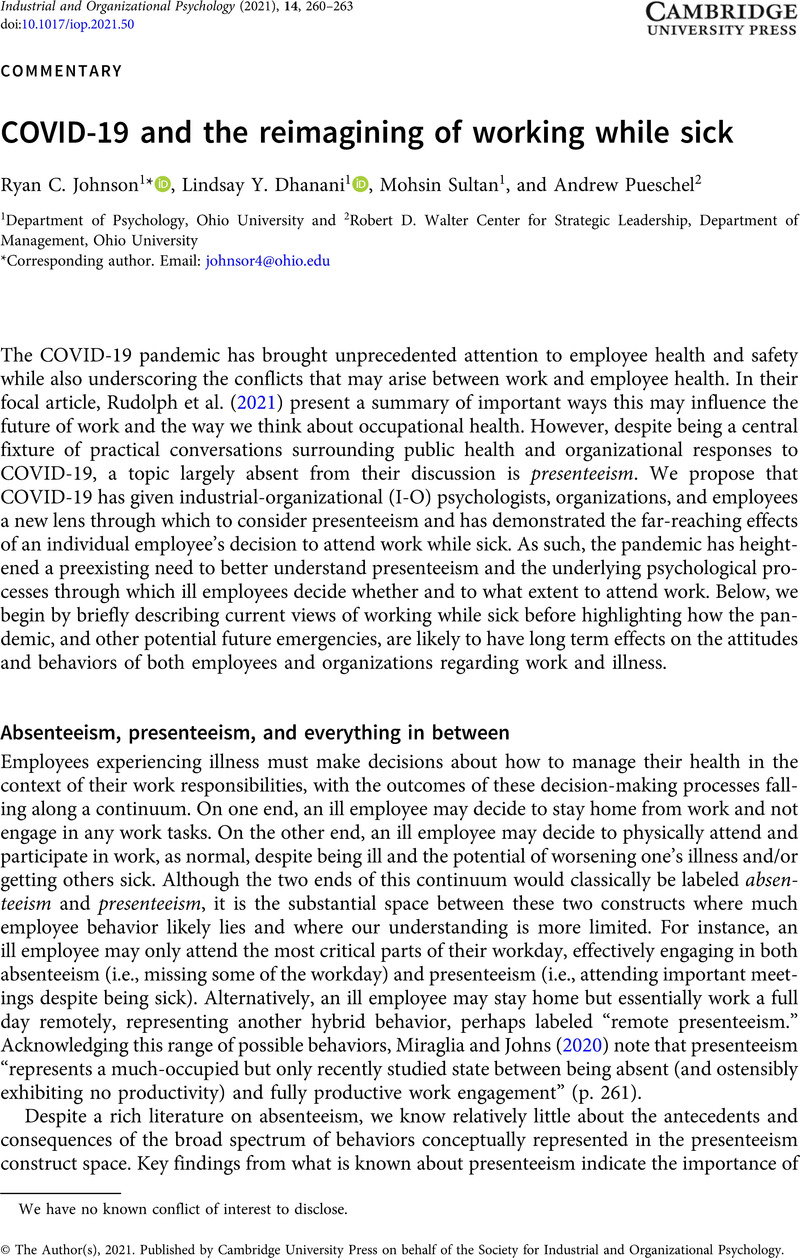Crossref Citations
This article has been cited by the following publications. This list is generated based on data provided by Crossref.
Laranjeira, Carlos
Pereira, Filipa
Querido, Ana
Bieri, Marion
and
Verloo, Henk
2022.
Contributing Factors of Presenteeism among Portuguese and Swiss Nurses: A Qualitative Study Using Focus Groups.
International Journal of Environmental Research and Public Health,
Vol. 19,
Issue. 14,
p.
8844.
Ozbozkurt, Onur Basar
Bahar, Emel
and
Yesilkus, Fatma
2024.
Fear of COVID-19 as a mediator within the impact of presenteeism on social loafing1.
Work,
Vol. 77,
Issue. 2,
p.
431.



